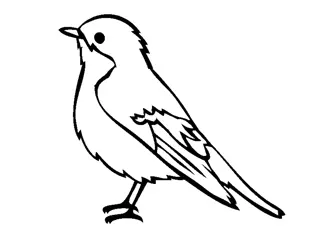Fascinating Facts about Eagles in North America
Eagles, the largest raptors in North America, include iconic species like the Bald Eagle and Golden Eagle. Once endangered, these majestic birds are now thriving with conservation efforts. Learn about their characteristics, behaviors, and significance in the ecosystem.
Download Presentation

Please find below an Image/Link to download the presentation.
The content on the website is provided AS IS for your information and personal use only. It may not be sold, licensed, or shared on other websites without obtaining consent from the author.If you encounter any issues during the download, it is possible that the publisher has removed the file from their server.
You are allowed to download the files provided on this website for personal or commercial use, subject to the condition that they are used lawfully. All files are the property of their respective owners.
The content on the website is provided AS IS for your information and personal use only. It may not be sold, licensed, or shared on other websites without obtaining consent from the author.
E N D
Presentation Transcript
EAGLE Presentation BY MARY WILBER AND ARLIE NESKAHI
Types of Eagles in North America The Eagles are the largest members of the raptor family The Bald Eagle and the Golden Eagle are residents of our continent The Eagles were listed as endangered birds but with the aid and protection given to them, they are once again becoming a common sight. Two other eagles are visitors from Asia and Eurasia and find their way to North America through the Aleutian Islands. They are the Steller's Sea Eagle and the White-tailed Eagle, also known as the "Gray-sea Eagle".
Language Bald Eagle: Pqel qi n (Nselxcin Language) Golden Eagle: Ml qnups (Nselxcin Language)
Bald Eagle Scientific name: Haliaeetus leucocephalus Biological rank: Species Higher classification: Sea Eagle Wingspan: 71 inch 91 inch Weight: 6.61 pound 14 pound Speed: 35 mph 43 mph (Gliding) 75 mph 99 mph (Diving) Did you know: Bald eagles eat mostly fish, swooping down to the water and catching them with their powerful talons. sciencekids.co.nz
Bald Eagle The bald eagle is the national bird of the United States of America. The bald eagle appears on its seal. Bald eagles are not actually bald; the name derives from an older meaning of the word, "white headed". The adult is mainly brown with a white head and tail. The sexes are identical in plumage, but females are about 25 percent larger than males. The beak is large and hooked. The plumage of the immature is brown. U.S. government's list of endangered species on July 12, 1995 and transferred to the list of threatened species. The bald eagle is an opportunistic feeder which subsists mainly on fish, which it swoops down and snatches from the water with its talons.
Golden Eagle COMMON NAME: Golden Eagle SCIENTIFIC NAME: Aquila chrysaetos TYPE: Birds DIET: Carnivore AVERAGE LIFE SPAN IN THE WILD: 30 years SIZE: 33 to 38 inches; wingspan: 6 to 7.5 feet WEIGHT: 6 to 15 pounds
Golden Eagle The golden eagle (Aquila chrysaetos) is one of the best-known birds of prey in the Northern Hemisphere. It is the most widely distributed species of eagle. Like all eagles, it belongs to the family Accipitridae. These birds are dark brown, with lighter golden-brown plumage on their napes. Immature eagles of this species typically have white on the tail and often have white markings on the wings. Golden eagles use their agility and speed combined with powerful feet and massive, sharp talons to snatch up a variety of prey, mainly hares, rabbits, and marmots and other ground squirrels.[3]
ENAEP Eagle Feather Blessing Order from Migratory Birds Beaded Blessing Ceremony Presentation of Feathers to ENAEP Graduating Seniors























